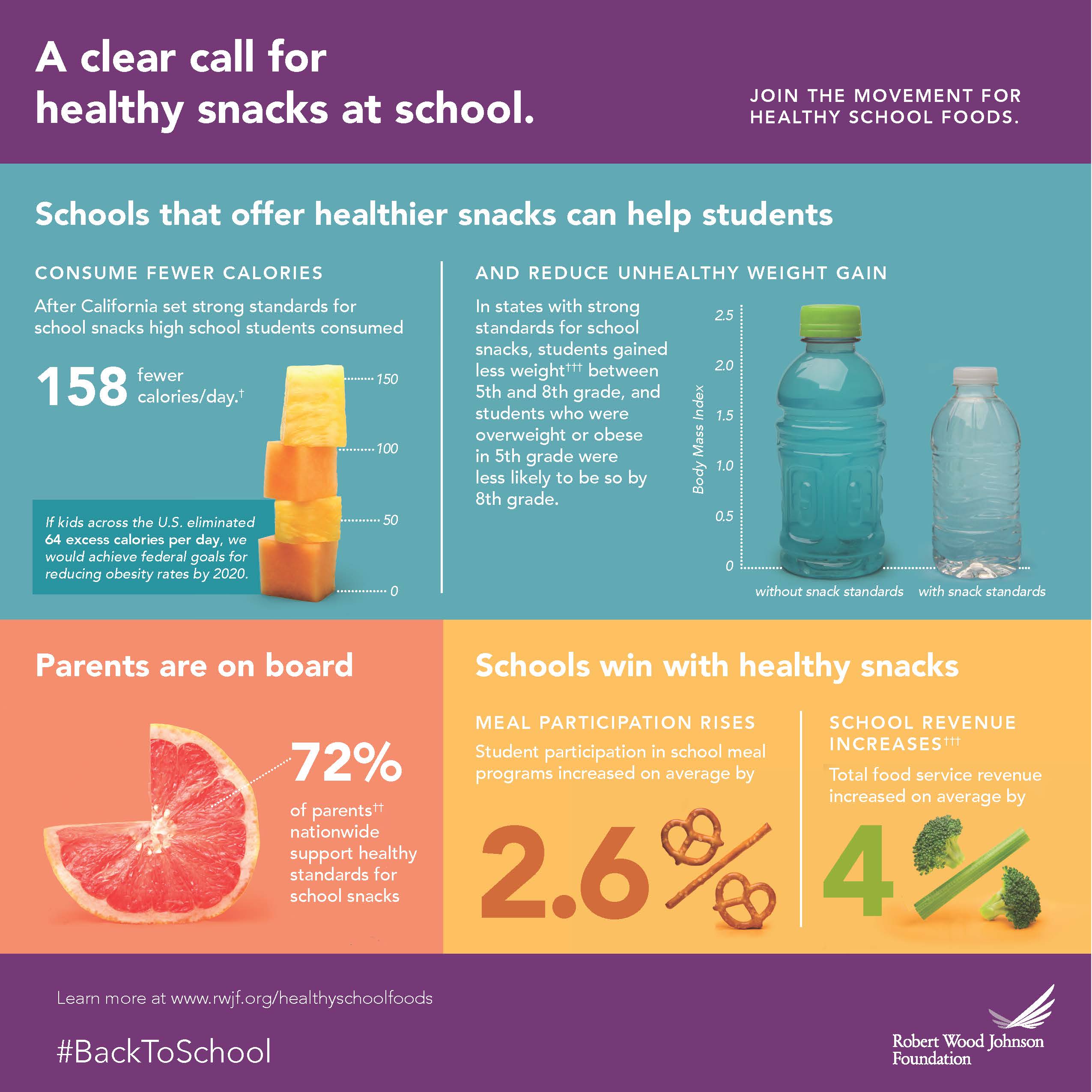December marked the fifth anniversary of the passage of the Healthy, Hunger-Free Kids Act. The legislation updated nutrition standards for school meals for the first time in 15 years, and set the first ever national nutrition standards for snacks and drinks sold in school stores, vending machines, and à la carte lines.
The “Smart Snacks” standards took effect in the fall of 2014 and research shows they are likely to have a positive impact on students and schools. Healthier school snacks can help students consume fewer calories and support school revenue. Plus, it’s what parents want.
Many schools were making healthy changes to snacks before the national standards went into effect. Learn more about what some schools were doing through the Healthy Schools Program, and see if your child’s school is part of the program.

